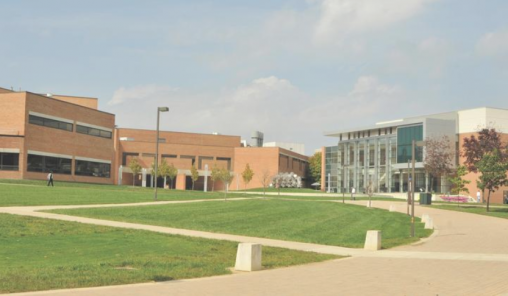Excerpt

When postsecondary campuses got the green light to reopen for the fall term, most college and university leaders scrambled to source signage, barriers, sanitizing stations and other protective equipment on the open market.
Wright State University turned its attention toward its largest asset: itself.
The Fairborn institution — one of Dayton’s largest universities by total enrollment — developed most of its campus adjustments in-house. Wright State’s facilities team handcrafted plexiglass barriers, foot pedals for restroom doors, hundreds of disinfection stations and more than 20,000 signs to ensure a hands-free, physically distanced environment.
Javan Conley, associate vice president of facilities management and campus operations, told me the approach enabled Wright State to leverage existing resources and generate more than $100,000 in much-needed cost savings.
“I think a lot of it was driven by our financial situation — we’re all being tasked with finding ways to make things less expensive,” he said. “We’ve got that expertise in house, and we were able to cut a lot of costs that other universities might have experienced.”
Wright State already had most of the equipment needed for bulk production, including an in-house sign shop and industrial cutters for metal stamping. The university was able to purchase other equipment — like the heating processes required to bend plexiglass barriers and electrostatic sprayers to enhance daily disinfection — at low cost.
Hundreds of individuals — including architects, engineers, business managers and volunteers — pitched in to help ready the campus for the fall semester.
Sourcing remains a challenge, Conley said. Demand for protective equipment skyrocketed as the Covid-19 pandemic hit supply chains, leaving most suppliers with limited inventory and lengthy lead times. Some materials, like the 1,500 trigger sprayers Wright State ordered to outfit disinfectant bottles, arrived just in the nick of time.
On the flip side, the lack of foot traffic on campus this summer was a lucky break for Wright State’s facilities team, enabling the university to make headway on deferred maintenance. Floors across campus were stripped and re-waxed, and seating arrangements in classrooms were reimagined to maximize distance.
As well, the campus was placed on “economizer mode” at the end of May. Electrical power was dialed back or shut down in several campus buildings, generating about $300,000 in additional savings, Conley said.
Though Wright State’s 3 million-square-foot campus was built to accommodate 18,000-plus students, enrollment declines have in recent years become problematic. But amid the pandemic, lower student volumes have presented a surplus of physical space, enabling WSU to adapt its campus in ways that might not be possible for other institutions.
“We have available classroom space, so we can spread folks out. In our dormitories, we were able to put one student per dorm because of the economics and environment that we’ve seen over the last few years,” Conley said. “So, even though we’ve had growing pains, it has presented us with some opportunities and flexibility.”
In the longer term, WSU is considering installing air treatment HEPA filters inside smaller spaces on campus — including its Creative Arts Center where choir and band activities often take place. The facilities team is also exploring bipolar ionization as a potential air treatment method, which could deliver better purification results than UV light systems, Conley said.
“As we see students coming back, we’re getting a lot of positive feedback. Wherever you go, supplies are available,” he said. “Cleanliness is a good thing. So, I could see some of the things that have come as a result of Covid-19 staying with us as we move into the future.”
View the original story at bizjournals.com

 Milling around
Milling around  Wright State recognizes Nursing Professor Kim Ringo for advancing international student success
Wright State recognizes Nursing Professor Kim Ringo for advancing international student success  Wright State honors graduating students for distinguished doctoral dissertations
Wright State honors graduating students for distinguished doctoral dissertations  Top 10 Newsroom videos of 2025
Top 10 Newsroom videos of 2025  Museum-quality replica of historic Hawthorn Hill donated to Wright State
Museum-quality replica of historic Hawthorn Hill donated to Wright State 